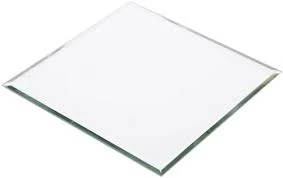

The Beauty and Functionality of Reflective Glass
Reflective glass has emerged as a significant innovation in modern architecture and design, merging aesthetics with practicality. This specialized type of glass is coated with a thin layer of metal or metal oxide, allowing it to reflect a significant portion of sunlight while still permitting visibility from the interior. The use of reflective glass has transformed how buildings interact with their environment, providing a plethora of benefits to architects, builders, and occupants alike.
One of the primary advantages of reflective glass is its energy efficiency. By reflecting solar radiation, it helps to regulate indoor temperatures, reducing the reliance on air conditioning during warmer months. This not only leads to lower energy bills but also contributes to a more sustainable environment by decreasing overall energy consumption. The reflective properties significantly diminish the heat that enters a building, making it comfortable for occupants while also extending the lifespan of HVAC systems.
In addition to energy savings, reflective glass lends a modern touch to architectural designs. Its sleek, shiny surface can enhance the visual appeal of a structure, allowing it to blend harmoniously with various surroundings. Buildings adorned with reflective glass often stand out due to their shimmering facades, creating a striking contrast against the natural landscape or urban skyline. This dynamic interaction generates an ever-changing display of light and color, captivating onlookers at different times of the day.

Reflective glass also offers enhanced privacy for occupants. The mirrored surface makes it challenging for outsiders to see inside during daylight hours, while maintaining a vibrant view of the environment outside. This feature is particularly desirable in urban areas, where buildings are often close together, and privacy is a cherished commodity.
Moreover, the advantages of reflective glass extend to safety considerations. The reflective properties can help mitigate glare, making environments more comfortable and reducing eye strain for those who work or live in buildings equipped with this material. Additionally, reflective glass can be designed with various thicknesses and strengths, providing options that can withstand different weather conditions and enhancing the overall durability of the building.
In conclusion, reflective glass is not merely a stylish option in contemporary architecture; it embodies the fusion of form and function. As we continue to embrace sustainable and efficient building practices, the role of reflective glass will undoubtedly grow, shaping the future of our urban landscapes while providing comfort, privacy, and aesthetic appeal.